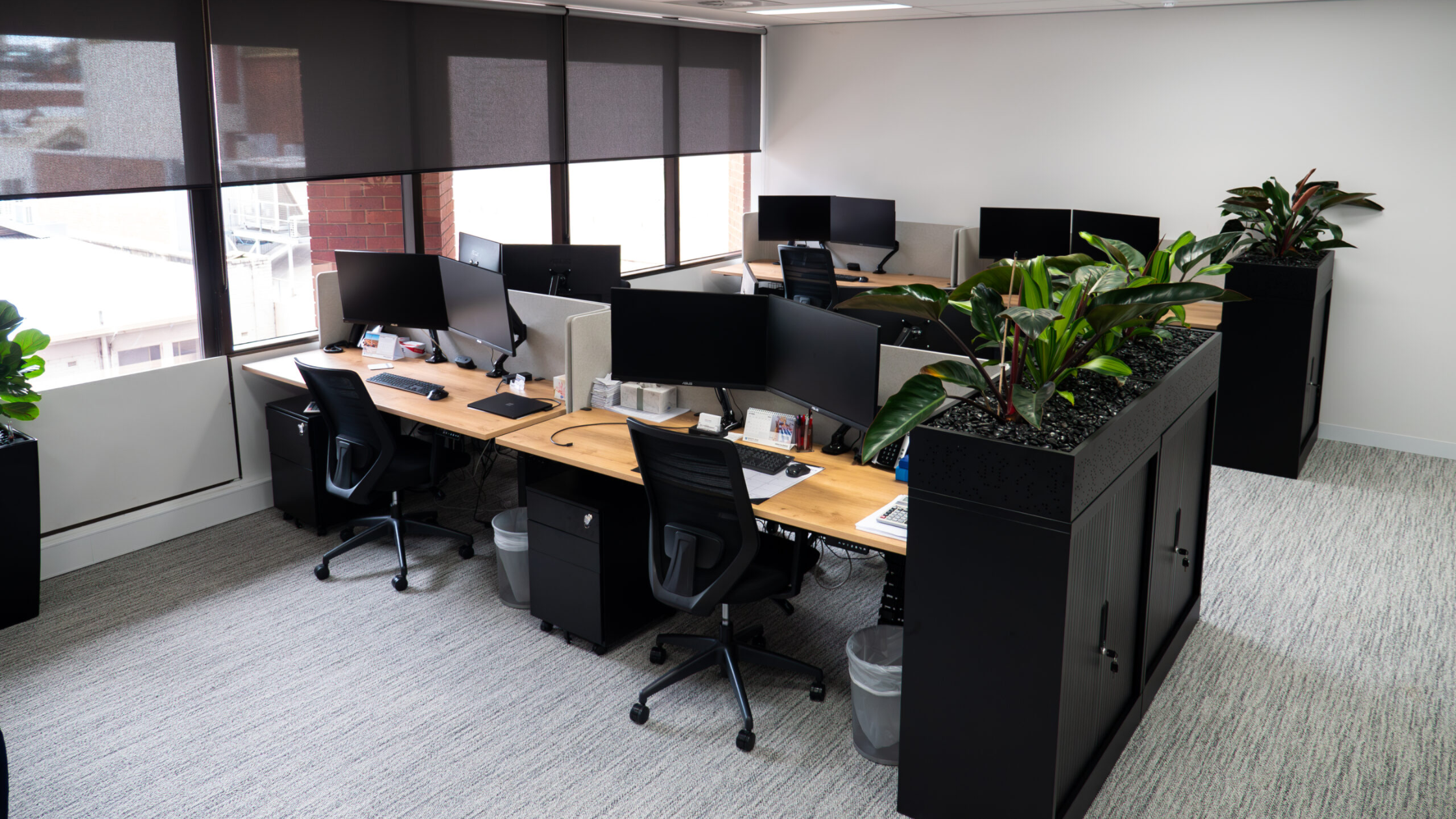
Small Space, Big Impact: Designing a Compact Workstation
Since many of us work from home or in small offices these days, it’s important to maximise the space we have. A well-designed small desk can boost comfort and productivity, proving that size is not always a determining factor in efficacy. In this article, we’ll cover key strategies and tips to help you create an inspiring and productive workspace—even in compact spaces.
Understanding the Need for a Compact Workstation
As remote work becomes increasingly popular, the demand for efficient workspaces in small areas is on the rise. A compact workstation can help you achieve a professional setting without overwhelming your living space. Whether you have a designated home office or are carving out a corner in your living room, the right design choices can make a significant difference.
Benefits of a Compact Workstation
- Space Optimization: Compact workstations are designed to utilise every inch effectively, allowing for essential items without clutter.
- Increased Productivity: A well-organised workstation promotes focus and efficiency, leading to better work outcomes.
- Versatility: Compact designs can often be adapted for different uses, making them perfect for multifunctional spaces.
- Aesthetics: Thoughtfully designed workstations can enhance the overall look of your home, blending functionality with style.
Key Elements of a Compact Workstation
To create a compact workstation that meets your needs, consider the following essential elements:
1. Choosing the Right Location
The first step in designing your workstation is selecting an appropriate location. Look for a spot that minimises distractions but is also comfortable. Consider areas near natural light, as this can improve your mood and productivity.
- Quiet Corners: Identify areas in your home that are relatively quiet. This could be a corner of your living room, a nook in your bedroom, or even a hallway if space allows.
- Natural Light: Position your workstation near a window to benefit from natural light. If that’s not feasible, consider adding good artificial lighting.
2. Selecting the Perfect Desk
The desk is the centrepiece of your workstation. For small spaces, opt for a desk that is functional yet stylish. Here are some types to consider:
- Wall-Mounted Desks: These can be folded up when not in use, freeing up floor space.
- Compact Desks: Look for desks that are designed specifically for small spaces, offering enough surface area without taking up too much room.
- Multi-functional Furniture: Consider desks that include storage options, like shelves or drawers, to keep your workspace organised.
3. Ergonomics Matter
In any workstation design, ergonomics should be a priority. Spending long hours at your desk can lead to discomfort and health issues if not addressed.
- Chair Selection: Invest in an ergonomic chair that provides adequate support. Look for adjustable options that allow you to customise height and lumbar support.
- Desk Height: Ensure your desk height allows your elbows to rest comfortably at a 90-degree angle while typing. This can help prevent strain and promote better posture.
4. Efficient Storage Solutions
In a compact workstation, organisation is key. Use vertical space and smart storage solutions to keep your workspace tidy.
- Shelving Units: Install floating shelves above your desk to store books, plants, or decorative items without taking up floor space.
- Carts and Trolleys: Consider using a rolling cart for additional storage that can be moved as needed.
- Drawer Organisers: Use organisers to keep small items like pens and paper clips sorted and accessible.
5. Incorporating Technology
Modern workstations often rely on technology for productivity. However, integrating tech into a small space requires careful planning.
- Cable Management: Use cable organisers to keep cords tidy and out of the way, preventing clutter and potential hazards.
- Wireless Devices: Opt for wireless peripherals such as a keyboard, mouse, and printer to reduce the number of cords on your desk.
6. Personal Touches
Adding personal elements to your workstation can make it feel inviting and inspire creativity.
- Artwork and Decor: Hang inspiring artwork or photos on the walls to create a motivating environment. Choose pieces that resonate with you and your work ethos.
- Plants: Incorporate greenery into your space with small plants that can thrive indoors. Not only do they purify the air, but they also add a touch of nature to your workspace.
7. Creating a Minimalist Aesthetic
A minimalist approach can be particularly effective in small workspaces. This design philosophy promotes simplicity and functionality, making your workstation feel less cluttered.
- Limit Essentials: Only keep items that are necessary for your work within reach. Store away anything that isn’t used frequently.
- Neutral Colour Palette: Choose a calming colour palette with soft neutrals or light colours to make the space feel larger and more open.
Tips for Maintaining Your Compact Workstation
Creating a compact workstation is just the beginning; maintaining it is crucial for ongoing productivity. Here are some tips:
- Regular Decluttering: Set aside time each week to tidy up your workspace. Remove any items that no longer serve a purpose.
- Digital Organization: Keep your digital workspace as organised as your physical one. Regularly sort and archive files on your computer to prevent digital clutter.
- Work-Life Balance: Establish boundaries between work and personal life, especially in a small space. Designate specific hours for work to prevent overlap into your home life.
Embrace the challenge of limited space, and remember that with the right design strategies, you can make a big impact in your small workstation. Whether you’re working from home or in a tight office, a well-thought-out compact workstation can lead to improved focus, creativity, and overall work satisfaction. Start your journey toward a more efficient and enjoyable workspace today!



